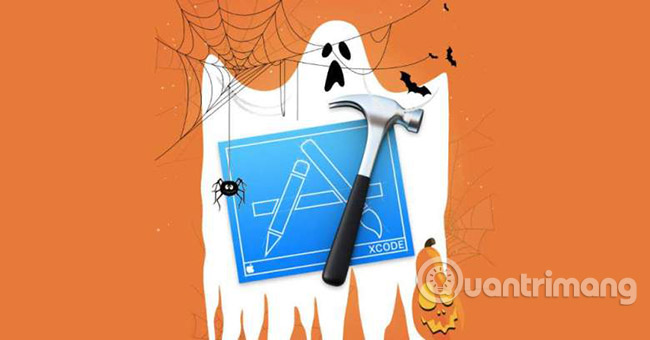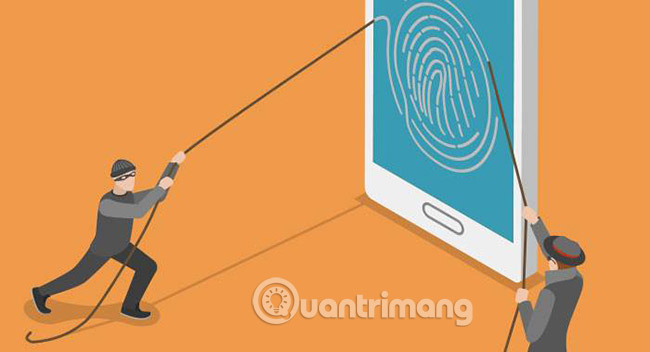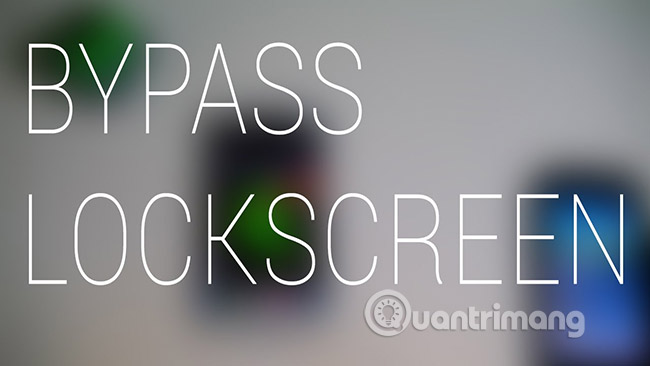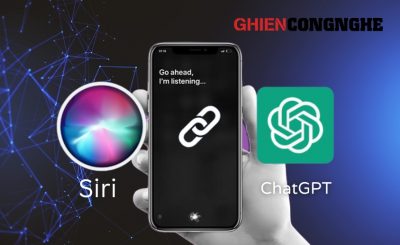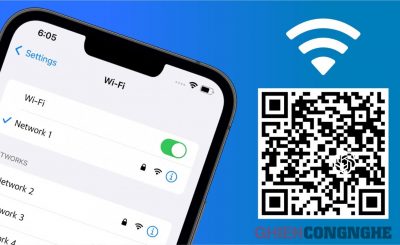Unfortunately, the days when Apple devices were “immune” from various security threats are long gone.
While it’s true that they’re still more secure than Android devices, that gap is rapidly closing. Issues like iCloud celebrity photo hacking, Find My Phone hijacking, and a growing number of malware threats have undermined comprehensive protection in Apple devices .
It’s more important than ever for iPhone and iPad owners to know what threats they may face and how to fix them, should the worst happen.
Today’s article will tell you how to fix 5 common security threats on iPhone and iPad.
XcodeGhost
What is XcodeGhost?
XcodeGhost was first discovered in the fall of 2015 in China. It is based on a malicious version of Xcode (Apple’s official app development tool), and the developers accidentally used XcodeGhost instead of the official Apple version to compile the app.
Those apps are then released to the App Store, go through Apple’s code review process, and finally be downloaded by the end user.
Luckily for users in Europe and North America, most of the affected apps are located only in China – although some apps (such as the popular business card scanner CamCard) are available in stores. stores globally. An estimated 40 to 350 apps were affected, according to studies. One of these apps was the very popular Angry Birds 2, although Rovio was quick to release a fix.
How does it affect you?
Apps that have been infected with XcodeGhost can collect information about the device and then encrypt and upload that data to the attacker’s server. The data collected includes application bundle identifiers, device name and type, system language and country, device UUID, and network type.
The study also found that the malware can issue fake alerts to steal user information, trick URLs into opening, and write data to the user’s clipboard.
How can you fix this?
Following the discovery, Apple released the following statement:
“We have removed apps that we know were created with this pirated software from the App Store. We’re working with developers to make sure they’re using the right version of Xcode to rebuild their apps.”
If you notice suspicious behavior while using your device, you should immediately check the affected app lists online, remove any compromised apps, and change all of your passwords.
Masque Attack
What is Masque Attack?
Masque Attack was discovered by US-based security company FireEye in late 2014.
This attack works by emulating and replacing legitimate apps already installed on the device, for users who downloaded a seemingly legitimate app from outside the App Store. This scam can take the form of a link to an “updated” app in a text message, WhatsApp message, or email.
When the link is clicked, the malware installs the malicious version of the app onto the original using the enterprise-provided iOS profile, making it virtually undetectable for the average user. out it.
Detection is further complicated by the fact that both the real App Store version and the malicious version use the same bundle identifier.
How does it affect you?
According to FireEye, the risk is huge. Masque Attack can overwrite banking and email clients and steal your banking credentials, native app local data (such as cached emails and login tokens), and numbers. undeclared amounts of confidential and private data.
How can you fix this?
Apple’s response was to claim that the Masque Attack isn’t really a threat because very few users are affected:
“We designed OS X and iOS with built-in safeguards, to help protect customers and warn them before they install potential malware. We are not aware of any customers actually affected by this attack. We encourage customers to only download from trusted sources like the App Store and heed any warnings when downloading apps.”
If you’re lucky you didn’t fall victim, simply removing the malicious app and reinstalling the official version from the App Store should fix the problem.
WireLurker
What is WireLurker?
Less than a month before the Masque Attack news, the Trojan Horse WireLurker was found.
Like XcodeGhost, the hack originated in China. It was active for more than six months before it was discovered, and once discovered, it heralded “a new era of malware hitting Apple’s mobile and desktop platforms.” , according to Palo Alto Networks.
The virus was introduced into pirated Mac OS X software and then transferred to Apple devices via a USB connection. But it cannot transfer the Trojan directly from one iOS device to another iOS device.
After being downloaded more than 415,000 times, it is recorded as the biggest explosion of malware on iOS.
How does it affect you?
The attack can target both jailbroken (jailbroken) and non-jailbroken (unjailbroken) devices.
If installed on a jailbroken device, WireLurker can use parts of the Cydia system to steal victims’ personal information, address books, and phone numbers. It will then use Cydia to infect other apps and install more malware.
If installed on a non-jailbroken device, this trojan exploits the enterprise licensing system by invisibly setting security profiles in the app. Settings. This will allow the app to install third-party comic apps without the user’s consent.
How can you fix this?
The good news is that if run on a non-jailbroken device, this trojan does no harm. Sadly, whether your device is jailbroken or not, the only way to get rid of the problem is to wipe your Apple device.
Before you do that, you need to make sure your Mac isn’t compromised, or you’ll re-infect your iOS device as soon as you reconnect it to your computer. Thankfully, Palo Alto Networks has released a Python script to completely remove WireLurker. This script can be found on GitHub.
Reference link: https://github.com/PaloAltoNetworks/WireLurkerDetector
Once it’s loaded, navigate to Settings > General > Reset on your iOS device. Choose Erase All Content and Settings and restart the device. You will need to reset the device, but all signs of WireLurker should be gone.
SSL Flaws
What is SSL Flaw?
In early 2014, a vulnerability in Apple’s SSL (Secure Sockets Layer) code was discovered. For those who don’t know about SSL, SSL is one of the technologies used to create a secure connection to websites.
The issue arose from a programming bug, which is believed to have been discovered prior to the launch of iOS 6.0. This error means that a key validation step was skipped, thus allowing unencrypted data to be sent over public Wi-Fi hotspots.
How does it affect you?
Since the data is not encrypted, it is very easy for hackers to steal and read passwords, bank details, personal information and other important data. This information can then be used for nefarious purposes.
The problem is only apparent when using public Wi-Fi spots, and secured, encrypted Wi-Fi networks, such as home and business networks, are not affected.
How can you fix this?
If you belong to the group of people who never upgrade their operating system, you could be in trouble.
It’s easy to check out by navigating to Settings > General > Software Update. If you’re using any iOS version prior to 7.0.6, it’s a bit risky. If you have an older Apple device and can’t update to iOS 7 (for example, iPhone 3GS or iPod Touch 4G), you need to make sure you’re running at least iOS 6.1.
The problem is also apparent on a Mac. You need to be running at least 10.9.2. If you are using any older operating system, avoid using Safari to browse the web.
Hack Lock Screen
What is Hack Lock Screen?
Hack Lock Screen is nothing new. Android phones have been affected by the Lock Screen hack in the past, and Apple devices also discovered this in March 2013.
However, in September 2015, a new hacking method appeared on iOS devices. It will allow hackers to access the phone’s iMessage app, contacts, and photos without entering any verification.
The process is simple: Enter the incorrect password four times, and after the fifth time, hold the . button Home. When Siri open, use it to open the watch. When the clock appears, press + to access the search, and from there access the data.
How does it affect you?
Only devices protected with a four- or six-digit password are vulnerable. If you use a longer alphanumeric password, you will not be affected.
Thankfully, access is partially limited, and not all of iOS’ systems are vulnerable. However, people regularly take screenshots of personal information such as screens of bank statements, flight details, and various personal accounts. All of this will be accessible to hackers.
How can you fix this?
There are three obvious solutions.
First, you should immediately change your current password to an alphanumeric password. Second, you can prevent Siri from accessing from the lock screen (Settings > Touch ID & Passcode > Allow access when locked > Disable). Finally, you should always make sure you’re running the latest versions of operating systems, to fix vulnerabilities as soon as fixes are published.
Have you fallen victim to any of the threats we mentioned in the article? Perhaps you know about some other dangerous threat other than those mentioned in the article? Let us know what you think in the comments section below!
See more:
Source link: How to fix 5 common security threats on iPhone and iPad
– https://techtipsnreview.com/

